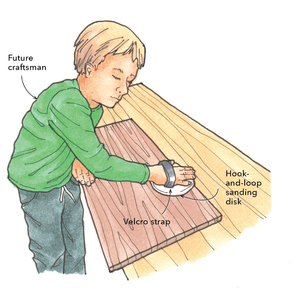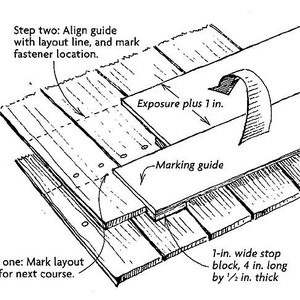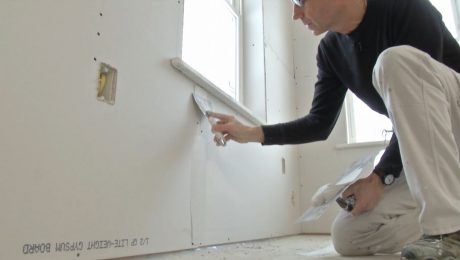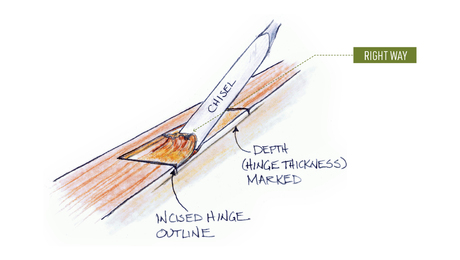
Neither the flat hook nor the thick casing of a tape measure lends itself to measuring an inside diagonal. Yet accurate diagonal measurements are extremely useful in checking for the squareness of rectangular openings or for laying out panels to fit tightly into not-so-square rectangular openings.
As shown in the drawing, I made a set of “points” for my tape that allow me to make quick, accurate diagonal measurements. I made the point for the hook end of the tape from stainless steel. The hook fits snugly through a 0.04-in.-wide slot, which I cut with a small arbor-mounted grinding disk and a Dremel tool. The grinding disk is fortunately about the same thickness as the hook. The back of the slot is exactly 3 in. from the point tip. By the way, it’s easier to get a precise measurement by cutting the point tip and then filing it to length after the slot has been cut. When I use the point, I add exactly 3 in. to my measurement.
I made the point for the casing end of the tape from 3/32-in.-thick plastic, like that salvageable from the lid of a plastic bucket. Plastic works well because it has some compressibility and can be made to fit snugly around the case of the tape measure. The unpointed edge is cut exactly 5 in. from the pointed end and is used as a reference to read the calibrations on the tape. If I use both points simultaneously, as shown in the drawing, I add 8 in. to the tape-measure reading.
—Nils Omholt, Sterling Heights, MI
Edited and illustrated by Charles Miller
From Fine Homebuilding #164





























View Comments
Pinch rods are far more accurate than measuring. Every cabinet woodworker knows this. This is supposed to be "Fine Homebuilding".--and you keep sending me emails to buy a magazine subscription.
Rockler sells a square check tape attachment.
http://www.rockler.com/square-check-for-tape-measures. I use a folding rule with a slide. But, Suburbanguy is right.
where's the like button? lol
Great idea, but there's no need to make the ends a specific length - all you need to do is make sure the measurement both ways is the same - whether you add 8" to both or 7.1934876" to both is immaterial.
Or, just make the two pointy things any length you wish, lay them down, and with an appropriate length solid rule, measure the distance between them and add that number to the total length of the pointy things. Then you don’t need to worry about any slop in the tape measure.